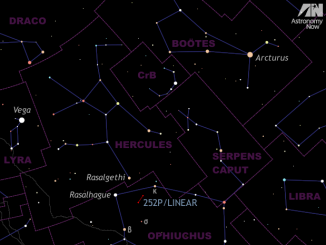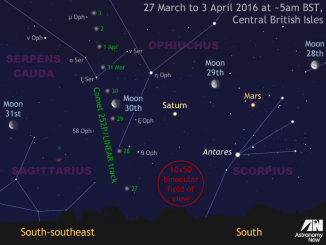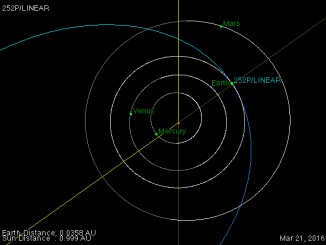
See Comet 252P/LINEAR in a moonless sky
On the afternoon of 21 March, Comet 252P/LINEAR brushed by Earth just 14 lunar distances away. The comet’s separation from Earth now exceeds 20 million miles, but it’s still a suitable target for binoculars and small telescopes — if you know exactly where to look. Here’s our UK observing guide for 252P/LINEAR in the constellation Ophiuchus between midnight and moonrise over the coming week.


